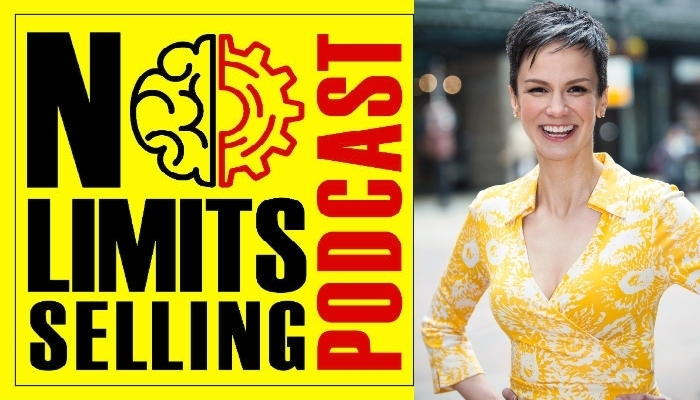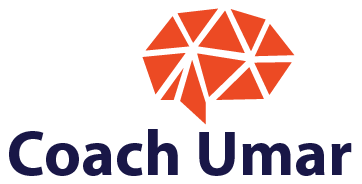Tamsen Webster as the ”Idea Whisperer”
On Episode 115 of The No Limits Selling Podcast, we have Tamsen Webster, Message Designer, English-to-English Translator, and Idea Whisperer. She helps impact-focused leaders build ideas for buy-in. As the “Idea Whisperer,” Tamsen helps people find, build, and tell the stories of their ideas using their Red Thread®, the universal (but unique!) tie between how we see the world and what we do in it.
Tamsen’s own Red Thread weaves through her 20 years as a brand and message strategist, though she says she learned the most about inspiring change as a Weight Watchers leader.
As a TEDx Executive Producer, Tamsen coached experts, iconoclasts, and pioneers from around the world to build their Red Threads into Ideas Worth Spreading—and more than 9 million YouTube views.
Today, she’s a globe-hopping keynote speaker on storytelling, branding, change management, and idea development, and a go-to consultant for enterprise companies like Verizon, Johnson & Johnson, and State Street Bank who want to their big ideas to have an even bigger impact.
Tamsen lives in Boston with her other half/chief ballroom dancing partner, and two amazing boys with big ideas all their own.

Contact Tamsen:
[EDITOR’S NOTE: This podcast is sponsored by No Limits Selling. It is a fun, fast-paced podcast that delivers hard-fought business advice that you can implement today to improve your sales and performance]
Interested In Our Real Estate Coaching Services? Explore Our Website: Link
Feeling Not Well Today? You Can Use Our Mindset Boosters App To amp Up Your Mood: Link
Find us on Social Media:
LinkedIn | Facebook community | Instagram
Like what do you listen to? Subscribe to our podcast!
Ready to become fearless? We can help you become fearless in 60 days so you accomplish more in your career Schedule A 15 min Call with Umar
Summary
Introduction and Guest Presentation
The podcast episode from the No Limits Selling series starts with host Umar Hameed introducing his guest, Tamsen Webster. Tamsen is portrayed as a communication expert who helps people articulate their ideas more effectively, a skill she refers to as translating "English to English". Umar expresses his enthusiasm for the conversation they are about to have.
Umar's New Project: Mindset Boosters
Umar shares his new project, "Mindset Boosters", with Tamsen and the audience. With over two decades of experience in helping people overcome their limitations, Umar's project aims to continue this mission. He seeks Tamsen's expertise to help articulate the project in a way that is easily understandable and engaging to potential users.
Appreciation for Tamsen's Website and Branding
Before they delve into the details of Umar's project, he takes a moment to compliment Tamsen's website. He describes it as beautifully designed and compelling, and Tamsen credits the design to Michelle Martello, who she says has done an excellent job of implementing her brand.
The Challenge of Communicating Big Ideas
Tamsen discusses a common issue that innovators and thinkers often face: the difficulty of communicating big ideas. She explains that while these individuals understand their ideas deeply, they sometimes struggle to connect these ideas to the problems they solve. Tamsen emphasizes that what people want to say about their idea is not always what others need to hear to understand it, especially at first.
Conclusion
In this episode of the No Limits Selling podcast, host Umar Hameed and guest Tamsen Webster delve into the importance of clear and effective communication, particularly when it comes to conveying big ideas. Umar introduces his new project, "Mindset Boosters", which aims to help people overcome their limitations. Tamsen, a communication expert, provides insight into the common challenges faced by innovators when communicating their ideas, emphasizing that the message they want to convey isn't always what the audience needs to hear initially.
The podcast underscores the critical role of clear communication in ensuring ideas are not only understood but also linked to the problems they aim to solve, thereby enhancing their chances of successful implementation.
Questions & Answers
Who is Tamsen Webster and what does she do?
What is the common challenge faced by people with big ideas according to Tamsen Webster?
Why is clear communication important in conveying big ideas?
Who designed Tamsen Webster's website?
Don’t miss this opportunity to transform your real estate career with one-on-one coaching. As an experienced real estate coach, I, Umar Hameed, am dedicated to helping you unlock your full potential and achieve your real estate goals. To learn more about who am I and my clients ↓
If you’re ready to take the next step, book an appointment with me today and begin your journey toward success in the real estate industry.
